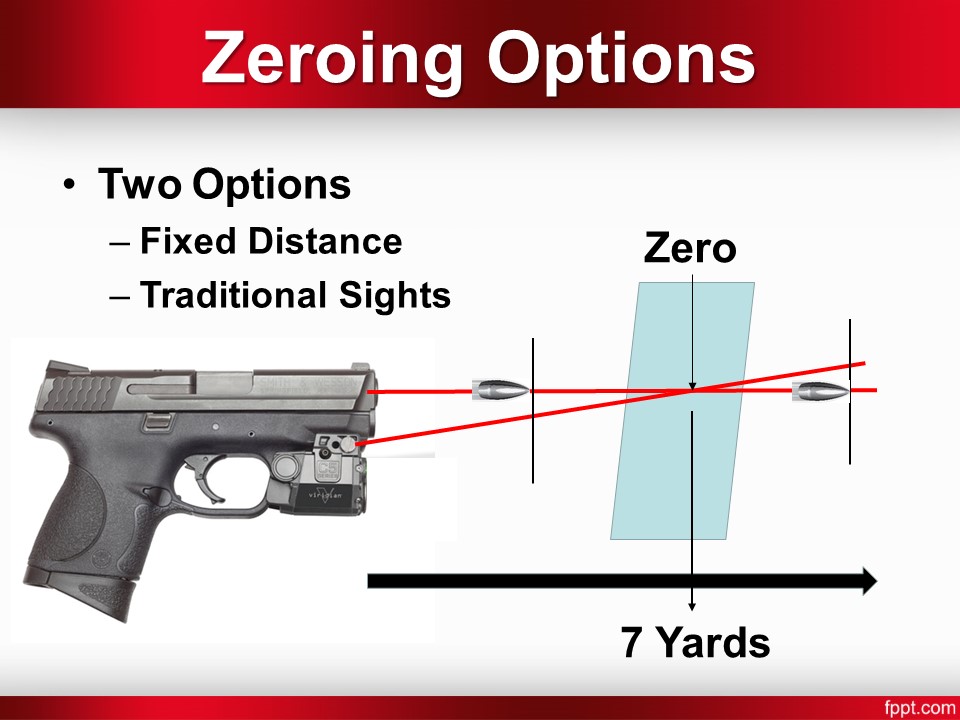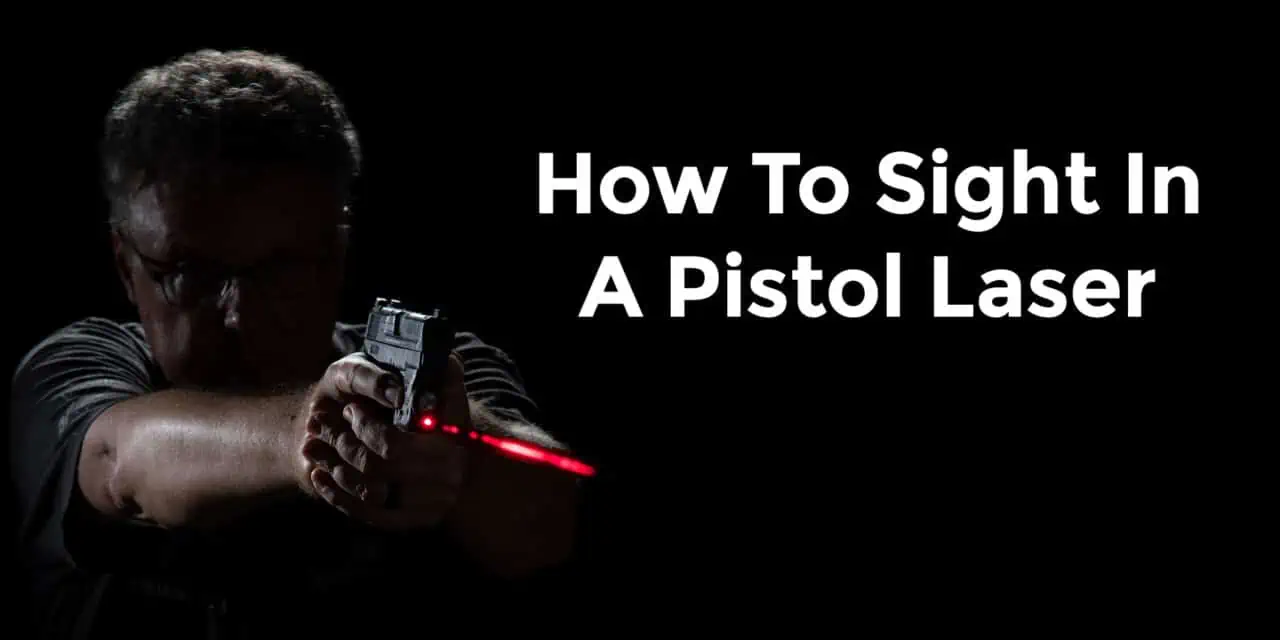How to Sight in a Laser: Expert Tips for Precision
To sight in a laser, you need accuracy and patience. This process ensures your laser aims true.
Many gun enthusiasts and hunters rely on laser sights. They improve accuracy, especially in low-light conditions. But a laser sight is only useful if it’s correctly aligned with your firearm. Improper sighting can lead to missed shots and frustration. This guide will help you understand the steps to sight in a laser effectively.
We’ll cover the basic principles and provide tips for achieving precision. Whether you’re a novice or experienced shooter, learning to sight in a laser is essential. Let’s dive into the details and get your laser sight perfectly aligned.
Choosing The Right Laser Sight
Selecting the right laser sight is crucial for accuracy. Various factors can influence your decision. Your choice depends on the type of firearm and your shooting needs. Below, we will guide you through the different types of laser sights and the factors to consider.
Types Of Laser Sights
There are several types of laser sights available. Each type serves different purposes. Here’s a quick overview:
- Red Laser Sights: Common and affordable. Suitable for low-light conditions.
- Green Laser Sights: Brighter and more visible. Effective in daylight and longer distances.
- Infrared Laser Sights: Used with night vision equipment. Ideal for tactical and military applications.
- Laser Grips: Integrated into the grip of the firearm. Offers a seamless design.
Factors To Consider
Several factors should be considered when choosing a laser sight. These include:
| Factor | Description |
|---|---|
| Visibility | Choose a laser that is visible in your typical shooting conditions. |
| Battery Life | Long battery life is essential for extended use. Check the specifications. |
| Ease of Installation | Some laser sights are easy to mount. Others may require professional installation. |
| Durability | Ensure the laser sight is robust. It should withstand recoil and harsh conditions. |
| Price | Laser sights come in various price ranges. Balance cost with features and quality. |

Credit: www.vssclub.org
Mounting The Laser Sight
Mounting the laser sight on your firearm is a crucial step. Proper mounting ensures accuracy and reliability. This section will guide you through the process.
Proper Placement
First, choose the best spot for the laser sight. This is usually on the rail of the firearm. Ensure the placement does not interfere with your grip. It should also not block your line of sight. The placement should allow easy access to the activation switch.
Securing The Laser
Once you have found the right spot, secure the laser sight. Use the mounting hardware that came with the sight. Tighten the screws evenly. Avoid overtightening as this can damage the sight. Check the alignment of the laser with the barrel. Make adjustments if necessary. A secure mount is crucial for maintaining accuracy.
Initial Setup And Calibration
Calibrating a laser sight is critical for accuracy. Start with the initial setup and calibration. This ensures your laser aligns with your firearm’s point of impact. Follow these steps to get started. Begin by securely mounting the laser sight to your firearm, making sure it is tightened properly to prevent any movement during use. Next, at a designated distance, sighting a laser on an AR can effectively help in adjusting the laser to match your target’s point of impact. Take your time to fine-tune the elevation and windage settings until the laser aligns perfectly with your sights for optimal accuracy during shooting.
Aligning With Iron Sights
Aligning with iron sights is the first step. Use a stable rest for your firearm. This minimizes movement. Next, activate the laser. Look through your iron sights. Adjust the laser until it matches the iron sights.
Ensure the laser dot sits at the top of the front sight post. Align the rear sight notch with the front sight. The laser should be visible in the same spot. This alignment is crucial for accuracy.
Adjusting For Windage And Elevation
Adjusting for windage and elevation fine-tunes your laser. Windage moves the laser left or right. Elevation moves it up or down. Use the adjustment screws on your laser sight.
| Adjustment Type | Direction | Purpose |
|---|---|---|
| Windage | Left/Right | Aligns laser horizontally |
| Elevation | Up/Down | Aligns laser vertically |
Turn the windage screw clockwise to move the laser right. Turn it counterclockwise to move it left. For elevation, turn the screw clockwise to move the laser down. Turn it counterclockwise to move it up.
Test the adjustments by aiming at a target. Fire a few rounds to check accuracy. Adjust as needed. Repeat until the laser aligns perfectly.

Credit: www.youtube.com
Finding A Suitable Location
Finding a suitable location is crucial for sighting in a laser. The environment can greatly affect your accuracy and the laser’s visibility. Whether you choose an indoor or outdoor setting, it’s important to consider a few key factors. Let’s explore the best options for finding the right spot.
Indoor Vs Outdoor
Indoor locations offer controlled conditions. You won’t have to worry about weather or wind. This can make the process smoother. Make sure the space is well-lit. You need to see the laser clearly.
Outdoor settings provide more space. You can set up at longer distances. Natural light can be both a help and a hindrance. Choose a time of day when the sun is not too bright. Early morning or late afternoon works best.
Ideal Backdrops
The backdrop you choose is very important. For indoor settings, use a blank wall. A white or light-colored wall is ideal. It reflects the laser well. Avoid cluttered or dark backgrounds. They can make sighting difficult.
Outdoors, use a large, flat surface. A fence or a wall works well. Make sure it is free of distractions. Green or blue surfaces can make the laser more visible. Avoid reflective surfaces. They can distort the laser’s path.
Using A Bore Sighter
Using a bore sighter is an effective way to align your laser sight. It helps ensure accuracy and precision before you hit the range. This method saves time and ammunition. Let’s explore how to use a bore sighter for sighting in a laser.
What Is A Bore Sighter
A bore sighter is a tool that aligns your firearm’s barrel with the sights. It projects a laser or uses a collimator to help you align the sights. Bore sighters come in different types, including laser and optical. They are handy for getting your sights close to the target before fine-tuning.
Steps To Use A Bore Sighter
First, ensure your firearm is unloaded and safe to handle. Safety first.
Next, insert the bore sighter into the barrel. Make sure it fits securely.
Then, turn on the bore sighter. It will project a laser or display a reticle.
Now, look through your sights. Adjust them until they align with the bore sighter’s laser or reticle.
Finally, remove the bore sighter and double-check your alignment. Your laser sight should now be close to accurate.
Using a bore sighter is a straightforward process. It enhances your shooting experience by ensuring your laser sight is properly aligned.

Credit: www.ammoman.com
Fine-tuning The Laser
Fine-tuning the laser is crucial for achieving the best accuracy. Precise adjustments ensure your laser aligns perfectly with your target. This process requires patience and attention to detail. Follow these steps to make your laser sighting precise and reliable.
Making Precise Adjustments
Use the windage and elevation knobs to adjust the laser. Windage moves the laser left or right. Elevation moves it up or down. Make small adjustments and check your aim. Turn the knobs slowly to avoid overcorrecting. Each click represents a small change. Keep a steady hand to maintain accuracy.
Ensure the laser is securely mounted. A loose laser can affect your aim. Use a screwdriver to tighten any loose parts. Always double-check the alignment after adjusting.
Testing At Different Ranges
Test the laser at various distances. Start with a close range, like 10 yards. Make sure your laser is accurate at this distance. Then, move to a longer range, such as 25 or 50 yards. Check for any deviations and adjust accordingly.
Testing at different ranges helps ensure consistent accuracy. It also helps you understand how the laser performs in various conditions. Keep notes on your adjustments for future reference. This will help you quickly fine-tune your laser next time.
Maintaining Your Laser Sight
Maintaining your laser sight ensures its accuracy and longevity. Regular upkeep can prevent unexpected issues and extend the life of your device. Below are some essential maintenance tips.
Regular Cleaning
Dirt and debris can affect your laser sight’s performance. Clean your laser sight regularly to keep it in top condition. Use a soft, lint-free cloth to wipe the lens and body. Avoid using abrasive materials that can scratch the surface. For stubborn dirt, a small amount of mild soap and water can be used. Ensure the sight is dry before use.
Inspect the sight for any signs of wear or damage during cleaning. Address any issues immediately to prevent further problems. Regular cleaning helps maintain the clarity and accuracy of the laser.
Checking Battery Life
A weak battery can cause your laser sight to malfunction. Check the battery life frequently and replace it as needed. Most laser sights have an indicator to show battery status. If your sight does not have this feature, replace the battery periodically to ensure optimal performance.
Use high-quality batteries to extend the life of your laser sight. Keep spare batteries on hand so you are always prepared. Proper battery maintenance ensures your laser sight is always ready for use.
Common Mistakes To Avoid
Sighting in a laser can be tricky. Avoiding common mistakes helps improve accuracy. Here are some mistakes you should avoid.
Overlooking Parallax
Parallax is the apparent shift of an object’s position when viewed from different angles. Ignoring this can lead to inaccurate laser sighting.
- Always check the alignment from various angles.
- Ensure the laser stays on target from different positions.
This simple step can save you from missed shots.
Ignoring Environmental Factors
Environmental factors can impact the accuracy of your laser sight. These include:
| Factor | Impact |
|---|---|
| Wind | Can shift the laser beam off target. |
| Light | Bright sunlight makes the laser hard to see. |
| Temperature | Extreme temperatures can affect laser performance. |
Consider these factors during sighting to maintain accuracy.
Frequently Asked Questions
How Do You Sight In A Laser?
To sight in a laser, mount it on your firearm. Align the laser with the iron sights or optic. Then, adjust the windage and elevation settings. Test fire and fine-tune as needed.
Why Is Laser Sighting Important?
Laser sighting is important for accuracy. It helps in quick target acquisition, especially in low-light conditions. It also improves shooting confidence.
What Tools Are Needed For Laser Sighting?
You need a laser sight, a firearm, and an adjustment tool. Additionally, a target and a safe shooting range are necessary.
Can I Sight In A Laser Indoors?
Yes, you can sight in a laser indoors. Use a laser bore sight and a safe backstop. Ensure there is enough space for accuracy.
Conclusion
Sighting in a laser doesn’t have to be complicated. Follow these steps. Keep your environment controlled. Use a stable rest for accuracy. Adjust your laser as needed. Practice regularly to maintain precision. With patience, you’ll improve. Safety is crucial. Always follow guidelines.
Enjoy better shooting experiences with a well-sighted laser.






